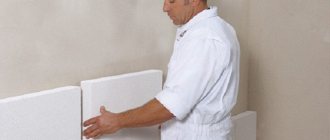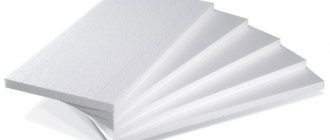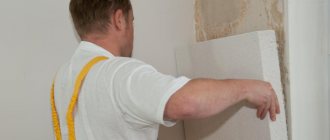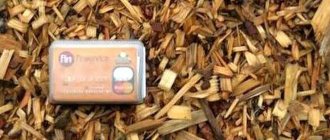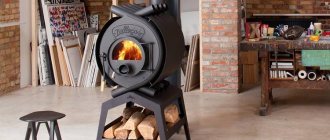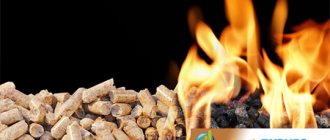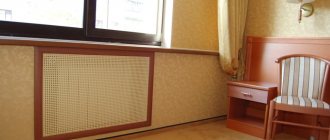There is a type of material called recyclable materials. This means they can be reused. One such material is expanded polystyrene or foam. We encounter it very often. For example, it can contain equipment, dishes, and furniture. Polystyrene foam is an excellent transport material. In addition, it is an excellent insulator. Many people who have accumulated foam products simply throw them away. However, few people know that they should not be thrown into the trash, but must be disposed of or recycled. The thing is that it can pollute the environment. Polystyrene waste does not decompose. Although they do not affect plants in any way, animals may suffer. How then?
The polystyrene foam will have to be recycled or handed over to recyclers who will do everything themselves. In this article, we will learn what polystyrene foam is made of, why recycling is needed, and how to make polystyrene foam at home.
The process of creating polystyrene foam
This material is made from expanded polystyrene by foaming it. Almost 98% of it consists of gas. There are 6 stages of creating polystyrene foam in an industrial environment:
- Foaming.
- Drying the resulting granules.
- Stabilization.
- Baking.
- Maturation.
- Slicing.
Let's look at each of the stages. To begin with, the raw materials are poured into a foaming agent, after which the steam generator generates pressure at which the granules begin to increase from 20 to 50 times. The entire foaming process takes 5 minutes. When the desired size is reached, the raw materials are unloaded for drying. It is needed so that excess moisture on the granules evaporates. Everything happens due to hot air directed from bottom to top. Drying and shaking takes about 5 minutes.
Then the raw materials are moved to bunkers, where they are aged for 4-12 hours. The foam is then formed or baked. The main task is to connect all the granules, creating a slab or other desired element. To do this, they are poured into a mold and subjected to pressure under high temperature from steam. Baking lasts 10 minutes. Next, the finished foam must be left to rest to get rid of moisture and tension inside. Sometimes ripening lasts a whole month. At the end of this stage, the block is installed on a machine that cuts the material into shape. The machine has nichrome strings that heat up and cut foam with ease.
The production also processes foam plastic. After all, when created, pieces remain. So they are processed. Why recycle material at all?
Technical indicators
Compared to traditional insulation, penoizol has many advantages. The main characteristics worthy of attention include:
- Thermal conductivity. The only low figure is 0.041 W/m/K. To ensure good performance, it is enough to lay a layer 10 cm thick.
- Soundproofing. Noise absorption is at a quite decent level. It is approximately 65%.
- Fire resistance. The flammability group to which penoizol belongs is designated G-1. Its flammability category is B-2. This indicates that it will not melt when exposed to fire. When high temperatures are reached, the material will begin to evaporate, without producing toxic substances. Under the condition of an open fire, 10 times less smoke is generated compared to polystyrene foam.
- Resistant to chemical components. The insulation does not react in any way to aggressive environments. This primarily applies to solvents of organic origin.
- Resistance to humidity. Penoizol has the ability to absorb moisture well, but it gives it away with equal success. The characteristics of the material are not affected. It is capable of absorbing up to 1/5 of moisture. Penoizol subsequently evaporates it. To prevent mold from forming on the wall, install a ventilation gap. The heat insulator absorbs approximately 20% of moisture throughout the day.
- Vapor permeability. The insulation in question is hygroscopic, and therefore allows the walls to breathe. Air circulates freely throughout the structure.
Penoizol has good vapor permeability, which allows the walls to breathe.
Other characteristics include biostability. This means that penoizol is not afraid of fungi, pathogenic microflora, and domestic rodents. The material is soft, so it adheres closely to any uneven surfaces. It fills any gaps. With a linear deformation of 9%, the compression strength is 0.5 kg per square centimeter.
They started producing penoizol relatively recently, so we can only talk about its durability. It appeared on the market only 50 years ago. But manufacturers claim that it can last up to 30 years. Environmental friendliness is another advantage, since toxic compounds are not released either during installation or during operation.
Video on how to make a foam generator:
Recycling material - why and how
If we talk about large-scale production, the goal is clear - there is a lot of waste, and this means additional funds. What can we say about us, ordinary users? The thing is that over the years there is more and more material in the house. It takes up space and accumulates more. It is not recommended to burn it, as it releases harmful substances, and throwing it away is also not an option.
So it turns out that the correct and effective solution is to recycle it or do it yourself. This type of recycling of polystyrene foam will help you use it for another purpose and get rid of excess waste at home. To do this yourself, it is important:
- will be determined for the purpose of processing and creating polystyrene foam;
- choose the optimal place where you can bring everything to life;
- will determine the method of influencing foam waste.
Many people choose to use polystyrene foam as packaging material. Storing it in finished form is problematic, but grinding it will help solve the problem. To start recycling, you need a foam crusher.
There are several ways to recycle or dispose of polystyrene foam:
- Using a chopper. It will help make crushed foam, which can later be used for various purposes. If there is no crusher, then you can do everything yourself. But, there is one feature - the granules are light, so for manual work you will need a bag or other container.
- As for recycling, it is very easy to do. If you no longer need polystyrene foam, simply treat it with citrus peel concentrate. It’s even easier to buy acetone or solvent and melt it in them. When exposed to these liquids, the foam becomes liquid.
- The last option is to melt polystyrene foam using heat. The finished raw material is suitable for a garden plot in the country. It is mixed with soil for beds or flower beds. Thanks to this, moisture will remain in the ground longer and be better absorbed. In severe drought, the soil will not crack. However, such soil will not support rotting.
Some may ask: why do I need crushed foam? It can be used not only for transportation, but also as a thermal insulation material. Let's look at where else it will come in handy.
Insulating walls in another way
The technology of insulating walls with thermal panels makes it possible not only to provide insulation, but at the same time to create a decorative finish. Thanks to the variety of textures and colors, you can turn any design idea into reality.
Various insulation materials can be used as the base of thermal panels, but most often it is polystyrene foam. Clinker tiles are laid on top of the base, imitating brick, stone or other finishing materials of your choice.
When constructing a building, insulation using permanent formwork is sometimes used.
Using extruded polystyrene foam, blocks are created that have special grooves with which they will be fastened to each other. After fastening, reinforcement is installed in the empty space and filled with concrete mortar. Thus, polystyrene foam is not only insulation, but also formwork for pouring cement.
After the walls have been insulated using this method, they must be treated with glue and reinforced with serpyanka. Finishing should be done both inside and outside.
How to insulate a house with foam plastic
Good external insulation significantly reduces heating costs as well as home maintenance costs.
However, insulating a house using this method will only be effective if it is done well. Before you begin repair work, you should thoroughly study the question of how to insulate the walls from the outside. Then the funds invested in work and materials will be effectively used and will quickly return in the form of savings on heating.
Using recycled polystyrene foam
Construction is a process that requires large investments. And if you have polystyrene foam, it will definitely find its use at a construction site. For example, foam chips can be used as filler for site depressions and uneven areas. It is clear that they cannot level the road, but it is easy to make a path or other unevenness. Recycled polystyrene foam can be filled into a well of different hole or cavity diameters.
Note! Over the years, the material will not change and will remain in the form and form in which it was left. It perfectly absorbs and thaws moisture. Therefore, metal containers with polystyrene foam are not so susceptible to corrosion.
In the construction business, recycled polystyrene foam is used to create lightweight bricks. Its structure is such that it is popularly called perforated. Even lightweight concrete has appeared, which, as experts say, is no less durable than regular concrete. This is polystyrene biton - an excellent building material. It consists of Portland cement, foam granules itself, water and an air-entraining additive. Sometimes sand is added to the mixture.
Another area of use is design. Designers love foam plastic very much and use it in a variety of ways. It is used to decorate walls, create pots, plant pots or similar accessories. Garden figurines or stands look very nice. They are created by pouring them into molds and heating them. You can find a variety of options for making polystyrene at home.
Comparison with polyurethane foam
The two materials are often compared in terms of financial benefits and technical performance. Safety of use comes first in importance. Manufacturers claim that penoizol is neutral and safe for humans and animals. But at the same time, in a number of states in Canada and America there is a law according to which the use of urea foam for construction is prohibited. It is considered a potential health hazard.
This situation is also observed in some European countries. This is explained by the release of formaldehyde during the polymerization of liquid foam. You can reduce the likelihood of adverse effects by using a vapor barrier on the inside of the wall.
As for polyurethane foam, there are no bans on it in any country in the world. It has all the necessary quality and safety certificates.
In terms of water absorption, polyurethane foam has minimal indicators, since its structure is porous and closed. It retains heat well and is equipped with protection against corrosion, mold and mildew. The appearance of condensation is excluded here. Despite the positive properties of penoizol, excess moisture can lead to its destruction. This can be avoided by installing moisture insulation.
Strong humidity can lead to the destruction of penoizol
In terms of strength and physical and mechanical properties, penoizol is also slightly inferior. It is resistant to mechanical stress, but in this indicator it is still ahead of polyurethane foam. In terms of price, urea foam is an order of magnitude cheaper than polyurethane foam.
Do-it-yourself material recycling
If you want to know exactly how you can recycle polystyrene foam, we suggest you consider the step-by-step instructions. All you need is enough foam and a crusher. Then you can get polystyrene foam granules and use them for your own purposes. If you don’t have your own foam crusher, you can make one yourself. After all, factory models have a very high price.
Here's what you'll need to have a new useful tool on your farm:
- sewer PVC pipe, diameter 50 mm;
- tape measure and marker;
- metal file;
- a wooden beam that would fit inside the pipe;
- metal screws;
- screwdriver and drill;
- metal studs with bolts;
- Chipboard or plywood to create a box.
Using this set of tools and materials, you can create a working foam crusher. With its help, sheets or other foam crafts will turn into crumbs. The mechanism is based on a moving part with teeth, which crush the foam into granules. And thanks to the container or box, it is easier to direct the material to the rotating mechanism. You will learn exactly how to create a crusher in this video.
So, when the crusher is ready, you can start working. Here's what to do:
- Choose a suitable location. Alternatively, choose a garage, warehouse, storage room or shed.
- Install the crusher, taking care of the container underneath it, where the crumbs will fall. This could be a bucket, bag or wooden box.
- Foam sheets are easy to crush. But as for figured products, it is better to break them into pieces with your hands in advance.
- Now all that remains is to turn on our homemade unit and gradually process the raw materials.
Thanks to this technology, most of the granules will remain intact. This means that they will cope with their task better than ever. You just need to be careful, as the foam is electrified and very light. It is important to make sure that there are no drafts in the room, otherwise you will have to remove everything from the floor later. Now the foam can be collected in bags and used immediately or stored until it has its time.
Note! If you melt the foam with acetone, it can be used in liquid form as glue. Although the mixture cannot be called safe.
Ingredients for cooking
To obtain polystyrene concrete blocks you need:
- Portland cement grade M400-500;
- washed river fine-grained quartz sand;
- clean water, preferably from the main water supply;
- foamed, unconnected polystyrene foam granules or large crumbs of ground polystyrene foam.
The initial components are mixed in a mixer and poured into molds (formwork) pre-lubricated from the inside.
For lubrication, an emulsion of diesel fuel (kerosene) and stearin (paraffin) in a ratio of 15: 1 is usually used.
The mass, density and strength of the blocks depend on the number of polystyrene foam granules , in a ratio with cement from 3 to 8 of the volume of cement. The proportion of cement and sand is 1:3.
Plasticizing additives can be added to the liquid composition for polystyrene concrete during mixing in a proportion of 1-3% of the volume, increasing its workability, as well as frost resistance and water resistance (waterproofing agents).
Let's sum it up
Polystyrene foam is a wonderful and versatile material. It can be used in a wide variety of fields. Its main advantage is its low cost, lightness, immunity to moisture and excellent noise reduction and sound insulation performance. And the fact that it can be reused makes the material simply irreplaceable in construction. So if you have a small amount of foam that's just lying around, why not give it a new life? Once processed, it can be used as dry insulation. And if you think carefully, there are a lot of use cases.
Recommended Posts
Laying gypsum decorative stone
Gypsum tiles under stone + photo
House made of expanded clay concrete blocks + reviews
Polymer concrete: composition, characteristics
We build a wooden house with our own hands
Colored mortar for bricklaying
Preparing house walls for insulation
The walls on which the insulation will be attached must be carefully prepared. All cracks and voids need to be repaired; damaged areas of the wall are best restored. If there are large differences - more than 5 cm, it is advisable to level the plane of the wall, otherwise it will be difficult to properly secure the insulating material.
Crack repair
It is not advisable to start work on a rainy day or install the material on wet walls. If the house renovation is major, it is recommended to install insulation after replacing windows and doors.
It is recommended to thoroughly prime clean walls before attaching foam plastic. Deep impregnation liquid can be applied with a roller or spray. The primer will protect the wall from corrosion and moisture, and improve the adhesion of the adhesive solution to the foam.
Preparing house walls for insulation
Before attaching the material to the wall, it is advisable to place beacons. Chop cords are stretched between the beacons. This will allow you to attach the foam with minimal deviations.
